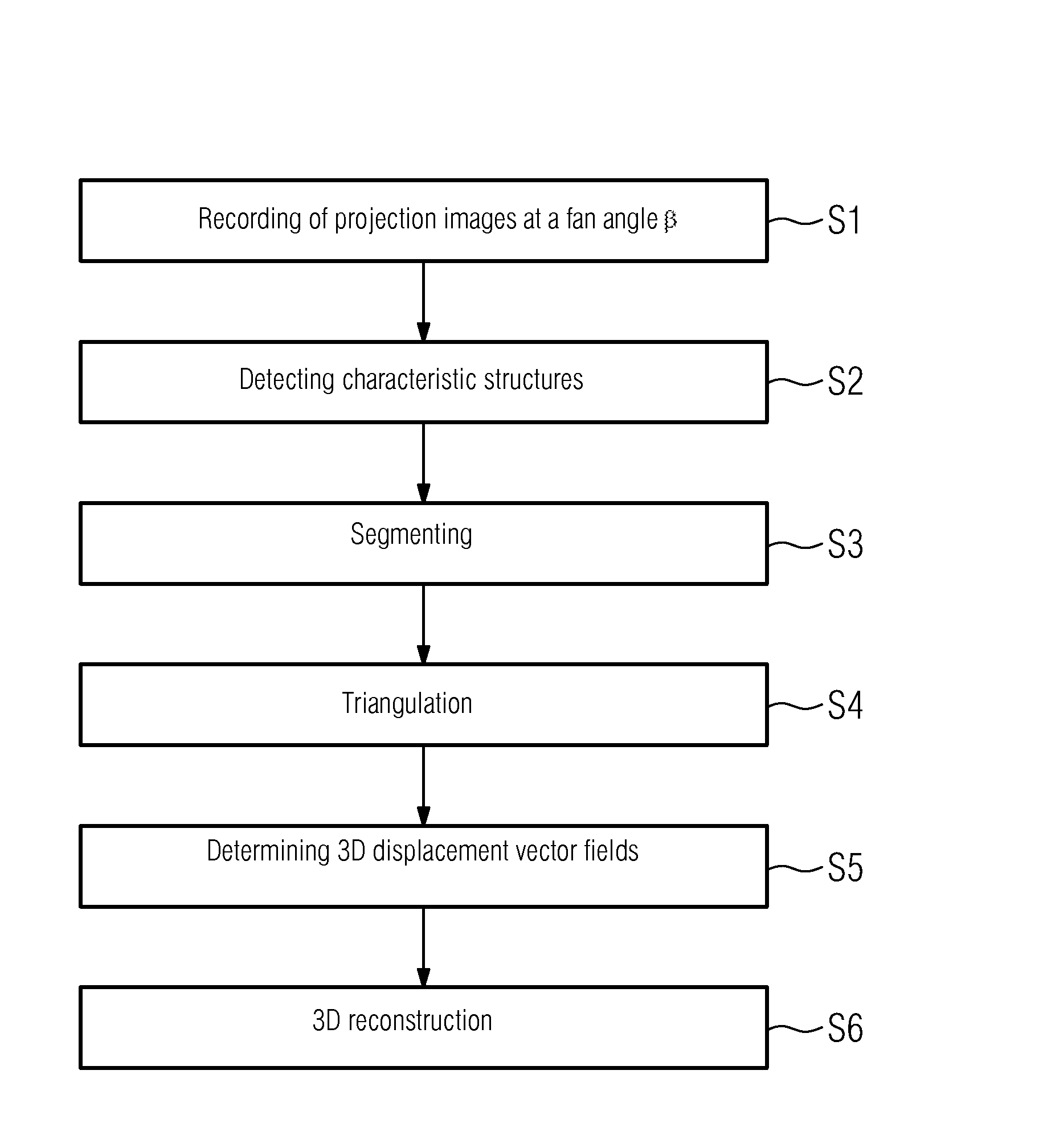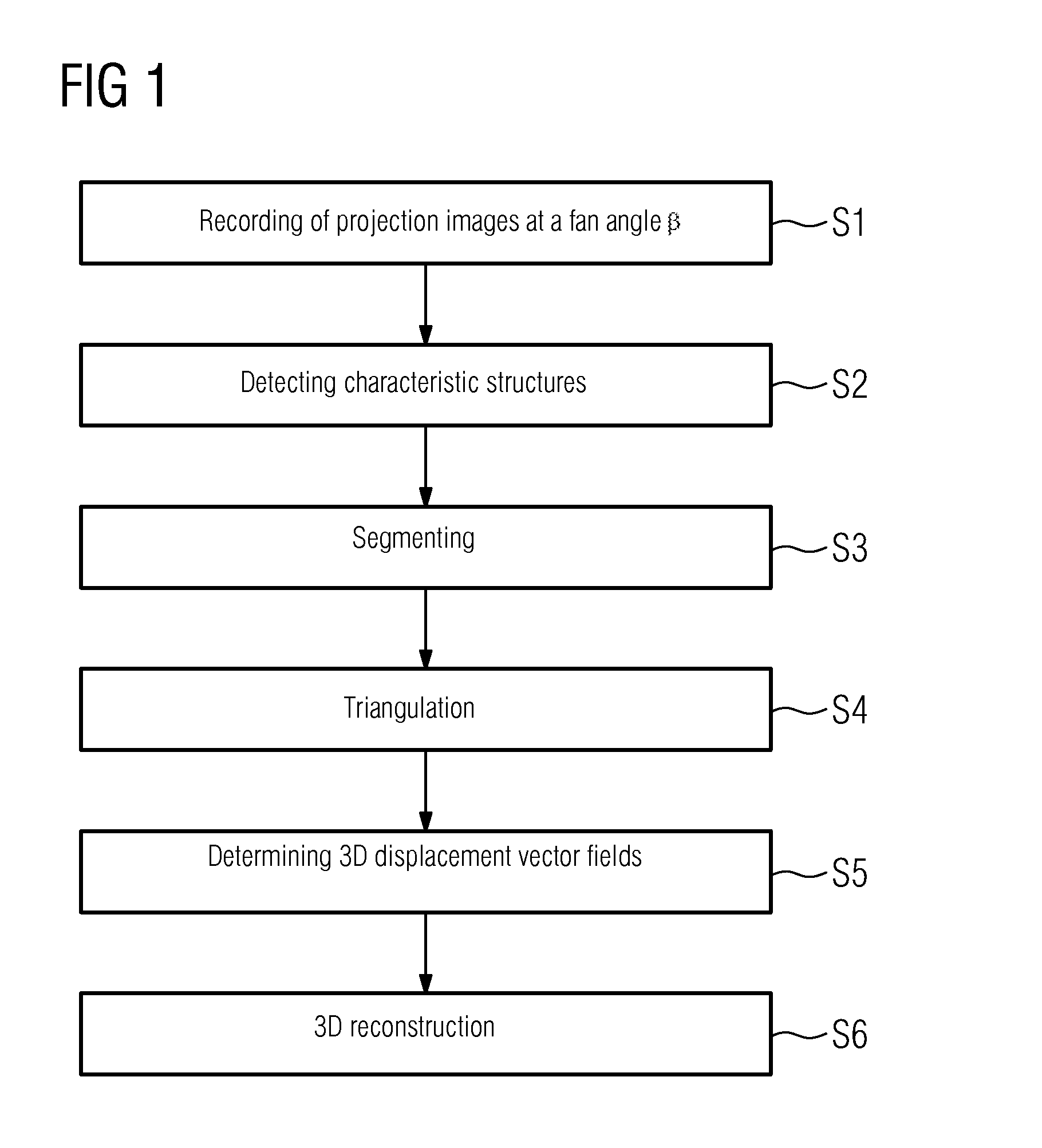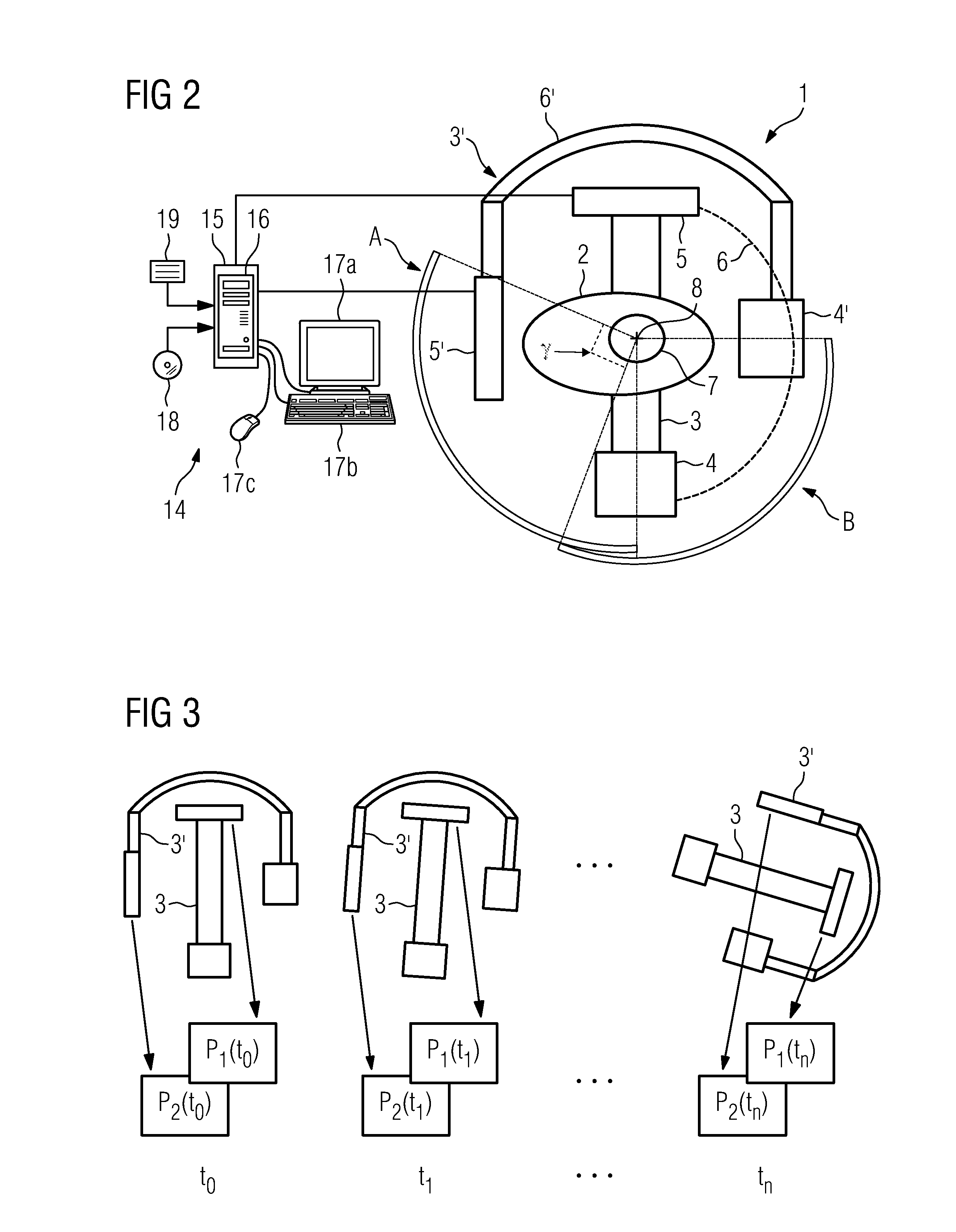Operating method for a pivotal poly-plane imaging unit for imaging a moving examination object
a technology examination object, which is applied in the field of pivotal polyplane imaging unit for imaging a moving examination object, can solve the problems of limiting or even completely preventing clinical use of these representations, continually moving examination objects, and particularly clear problems, so as to achieve simple and efficient image generation and improve the reliability of image reconstruction
- Summary
- Abstract
- Description
- Claims
- Application Information
AI Technical Summary
Benefits of technology
Problems solved by technology
Method used
Image
Examples
Embodiment Construction
[0032]In its preferred embodiment for image recording the invention does not use a typically used mono-plane X-ray system, but a bi-plane C-arm X-ray system.
[0033]FIG. 2 schematically shows a device 1 for producing a three-dimensional image data record of an examination object. The device 1 is a bi-plane X-ray tomograph, in particular a bi-plane 3D rotational angiography device. The examination object is the chest region, in particular the heart 7, of a patient 2.
[0034]In a first imaging plane A the device 1 comprises a recording unit 3 having an X-ray radiator 4 and an X-ray detector 5. The X-ray radiator 4 and the X-ray detector 5 are attached to the ends of what is known as a C-arm 6 (shown only in broken lines) so as to oppose each other and together with the latter define the first imaging plane A. The C-arm 6 is in turn substantially centrally mounted on a stand (not shown) so as to rotate about an isocentric shaft 8. The X-ray radiator 4 and the X-ray detector 5 can be rotate...
PUM
 Login to View More
Login to View More Abstract
Description
Claims
Application Information
 Login to View More
Login to View More - R&D
- Intellectual Property
- Life Sciences
- Materials
- Tech Scout
- Unparalleled Data Quality
- Higher Quality Content
- 60% Fewer Hallucinations
Browse by: Latest US Patents, China's latest patents, Technical Efficacy Thesaurus, Application Domain, Technology Topic, Popular Technical Reports.
© 2025 PatSnap. All rights reserved.Legal|Privacy policy|Modern Slavery Act Transparency Statement|Sitemap|About US| Contact US: help@patsnap.com



